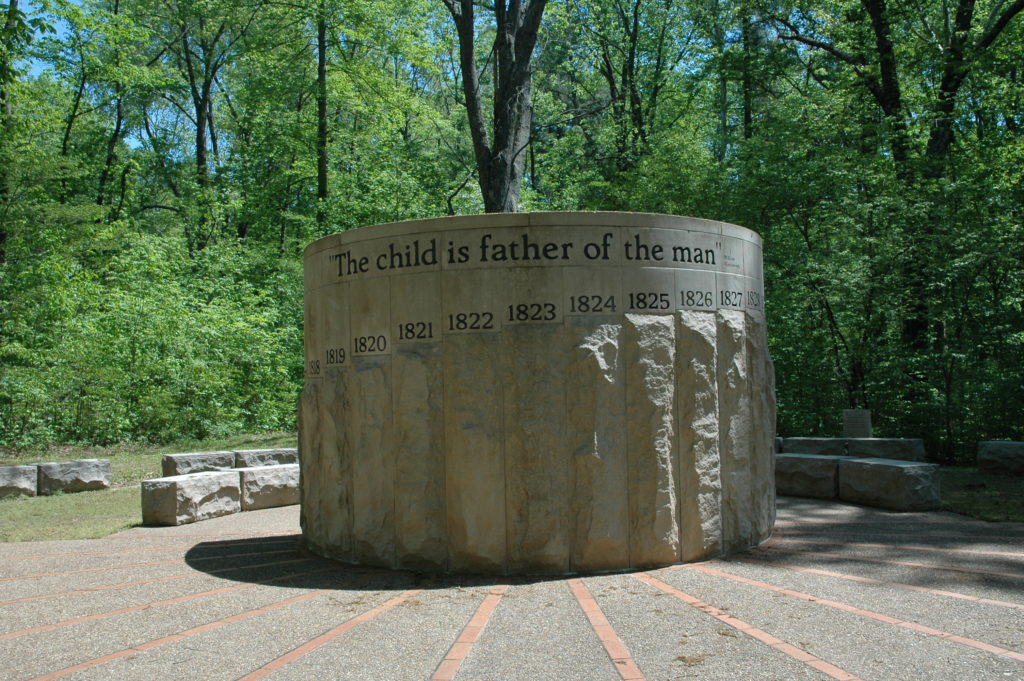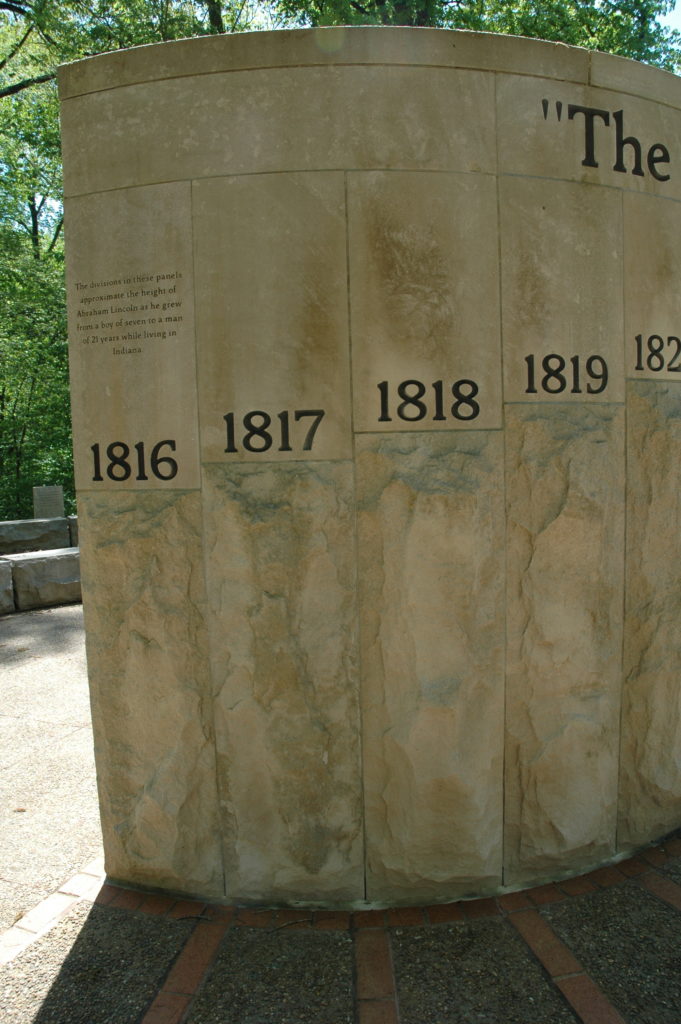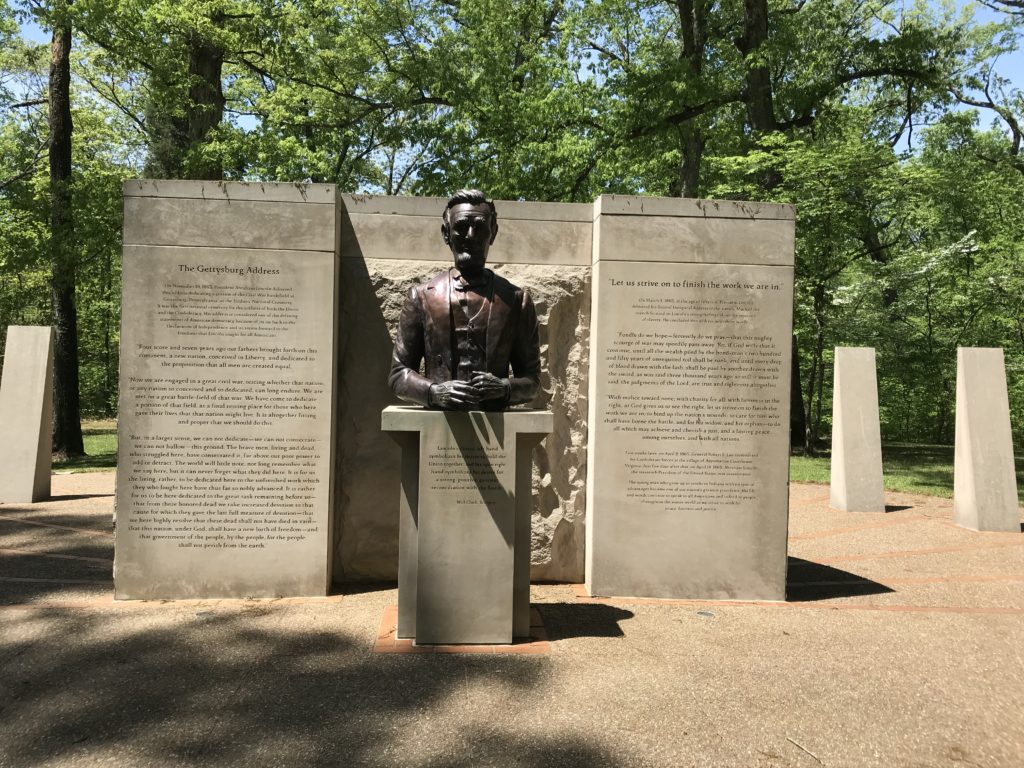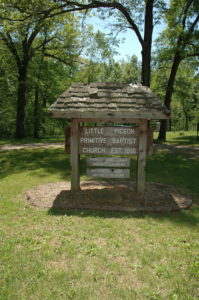 Directly across the road from the Lincoln Boyhood National Monument in the aptly named Lincoln City, Indiana is Lincoln State Park. I paid the $9 out of state entrance fee and went to visit with Sarah Lincoln, Abraham’s sister.
Directly across the road from the Lincoln Boyhood National Monument in the aptly named Lincoln City, Indiana is Lincoln State Park. I paid the $9 out of state entrance fee and went to visit with Sarah Lincoln, Abraham’s sister.
Sarah was born two years and two days before Abraham. Their younger sibling, Thomas Jr., died a few days after his birth, so Abraham always looked up to and cherished his older sister, especially after their mother died and Sarah became for a time the woman of the family at age eleven. Sarah married Aaron Grigsby when she was eighteen, but died during childbirth a year and half later.
So my visit was to see Sarah’s grave. Winding through the wood-lined roads of the State Park I found the Little Pigeon Primitive Baptist Church where the family attended services. Abraham served as church sexton, responsible for maintaining the church property, ringing the bell for services, and digging graves. Behind the church is Old Pigeon Cemetery, which holds the final resting place for many of the first families of the Little Pigeon Creek settlement. Sarah’s gravestone was one of the first in the cemetery, and one of the most prominent. It’s certainly one of the cleanest, maintained pristine for Lincoln pilgrims, who often leave pennies – featuring Abraham Lincoln’s profile – on the relief flower bough that adorns the center of the stone.
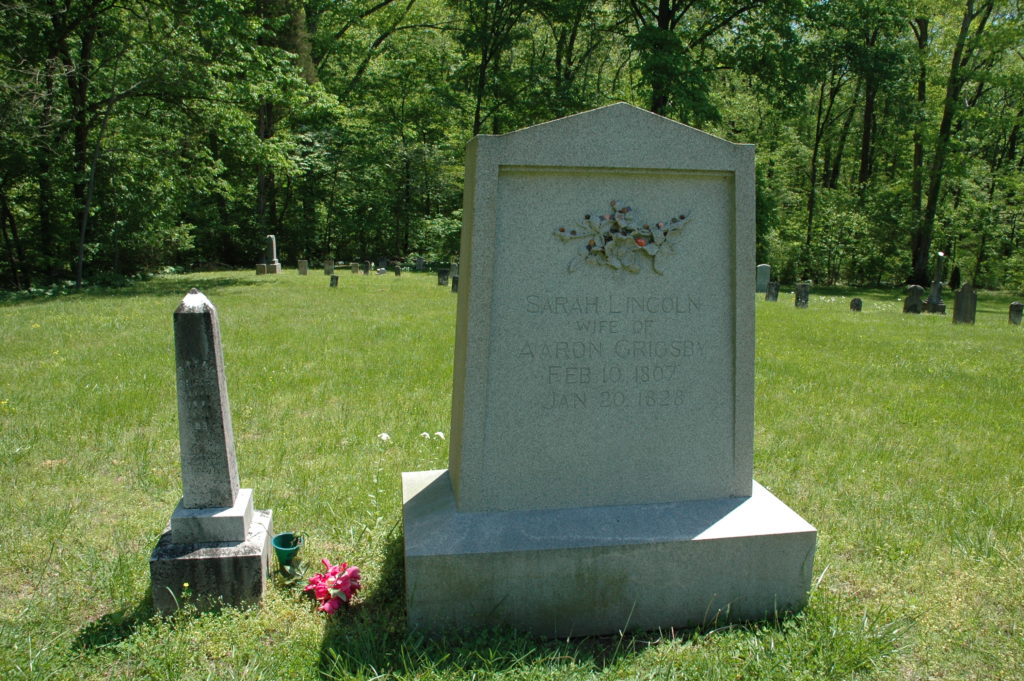
Her husband Aaron Grigsby’s gravestone is there too. In contrast to Sarah’s, Aaron’s stone is a small obelisk darkened by age and lack of maintenance. I suppose the reflects their relative positions in American history.
On my way out of the park I stopped at an area I had spied on the way in listed rather unhelpfully as the “Abraham Lincoln Bicentennial Plaza.” The plaza was dedicated in 2009, the bicentennial of Lincoln’s birth. From the parking lot all you can see is trees, but as you follow the short path you suddenly find yourself viewing a small plaza with a semi-circular stone monument. With help from the ample signage, you realize that the roughened portions of the stone in front of you represents Abraham’s height for each of the fourteen formative years he lived in Indiana.
Around the back is another surprise. What seems like a circular monument on one side turns out to be only half a circle. The back side features a half statue of Lincoln in front of a wall engraved with the Gettysburg Address and the proration from his Second Inaugural Speech. On the statue’s base, the sculptor, Will Clark, explains the positioning of the hands:
Lincoln’s closed left hand symbolizes his desire to hold the Union together, and his open right hand symbolizes his desire for a strong, positive, post-war reconciliation with the South.
There is more to see in Lincoln State Park, including a Lincoln amphitheater and other areas related to Lincoln. After the park, I headed north. Tomorrow would be a research day in the library. More on that next. Meanwhile, for more on my Chasing Abraham Lincoln travels, follow the link and scroll down.
David J. Kent is an avid science traveler and the author of Lincoln: The Man Who Saved America, in Barnes and Noble stores now. His previous books include Tesla: The Wizard of Electricity and Edison: The Inventor of the Modern World and two e-books: Nikola Tesla: Renewable Energy Ahead of Its Time and Abraham Lincoln and Nikola Tesla: Connected by Fate.
Check out my Goodreads author page. While you’re at it, “Like” my Facebook author page for more updates!




